The Sheffield-Simplex 1915
About Sheffield-Simplex
The origins of the Sheffield-Simplex armoured car are murky at best, whereas the story of the brand and base vehicle is not. This British car and motorcycle manufacturer operated from 1907 to 1920. It was based in Sheffield, in the Yorkshire, and Kingston upon Thames in the Surrey. It had backing from aristocrat/coal magnate Earl Fitzwilliam. The first cars were designed by Peter Brotherhood and basically were an improved version of the Brotherhood-Crocker cars made in London (previously founded by Fitzwilliam). Stanley Brotherhood sold the London site in 1905, moved to Peterborough, near Fitzwilliam's Milton Park HQ. Peterborough refused permission to built a plant so the Earl suggested Sheffield, Tinsley, not far from Wentworth-Woodhouse (Fitzwilliam family house).Four cars were proposed by November 1909. The largest were the 20-30 hp LA5 and LA6 six-cylinder 4,324 cc, and in 1911 25 hp LA7 (6c 4740 cc) making the company, the only rival to be Rolls-Royce. The cars were even displayed in a London showroom close to Conduit Street. By 1913 The Times mentiond the company as the "highest point to which motor design has yet attained". The LA7 was updated to 30 hp by 1913 with electric starting wheras the company had Warwick Wright as managing director. As World War I, broke out, the company made armoured cars (see below) but also the ABC Wasp and Dragonfly aircraft engines, as well as munitions. The company was restarted in 1919 but never achieved its pas renown and was declared bankrup in 1925, but only presented a single car of 7777 cc, the LA7b (one built) in 1921.
Armouring the Sheffield-Simplex
Manufacturing of Sheffield-Simplex Armoured Cars (Belgian Pattern) originated in the general move of all car companies on demand of the Royal Naval Air service at first and later the Army for the eastern front. Since the latest model LA7a was comparable to the Rolls Royce, Wright was advised to propose an armoured conversion. This conversion was done at the Army Workshops for Motor Lorries & Waggon Co. Ltd, in Hayes, Middlesex, near London as the Sheffield-Simplex had no experience with armouring cars. It was started in 1915.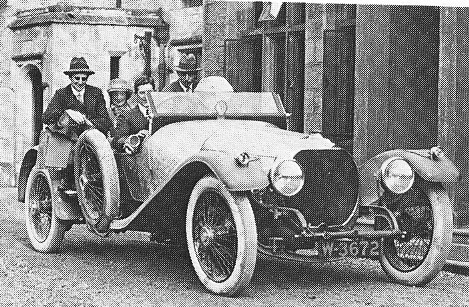
The resulting vehicle was somewhat recoignised as a success, but it was not destined to continue. First World War expediencies meant factories received state orders and had to comply. In that case, priority was given to air production. Simplex only "produced" a handful of strange-looking vehicles. Aside the LA7b derivative, they designed a transport van adapted for the Russian Government as reported on the "Sheffield Daily Telegraph" in its edition of Thursday 31 December 1914.
Design
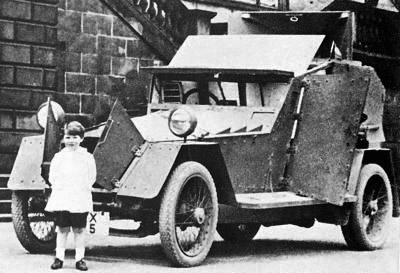
Early Belgian vehicle, with no turret but simple shield.
The vehicle designed was presumably based on the LA7b, initial version (before the engine upgrade of 1919). The engine was rated for 30 hp under the 1913 specification (RAC 29.47 hp) and included an electric starter, quite a luxury feature at the time. Its chassis of 5-seats passenger car was kept without any body, and sent naked to Motor Lorries & Waggon Co for adding the steel bodywork. It seems for some sources that there were two armour designs. The first was done for a Belgian order. However one vehicle was tested by the Belgian Army and flat-out refused.
As second and final body armor design was developed by Staff Captain of the Russian Army Mironov when it was envisioned to made this for Russia. 1916 saw a massive foreign procurement, with armored car purchase contracts completed with the British firms Austin, Lanchester, Sheffield Simplex, Armstrong Whitworth, and Jarrott. In the end, the vehicle had a chassis far too luxurious for military purposes. It was weaker overall and less sturdy than the Rolls Royce chassis, which met success. The final vehicle saw a production of 25 and nevertheless supplied later in 1916.
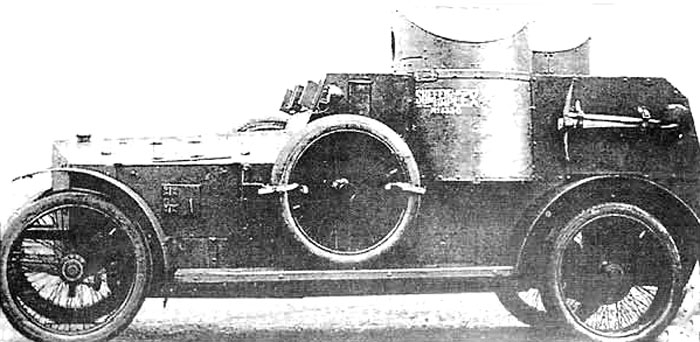
The armoured body was relatively straithforward, with bolted steel plating along the engine hood, a V topped engine cover, central spine, opening radiator shutters, single opening on the front plate before the driver (up folding shutter), two side shutters hinging forward (the co-driver was blind), large hatch above and two doors, hinged forward, attachements points on the step for storage and spare wheel on the flat back side plate, and turret ring.
It seems initially the vehicles showed a provisional shield. Two one-man admiralty style turrets were installed later in échelon for greater arc of fire. So in normal use, two MG gunners were aboard, but the co-driver could be used as well, reducing the crew to three. They manned Maxim MGs (same mount as the Vickers), liquid-cooled, 7.62 mm. The engine was the in-line, 6-cylinder, liquid-cooled Sheffield-Simplex with carburetor capable of delivering 30 hp and above 6,000 cc. Once the armour was fitted, speed fell dramatically, from circa 65 kph on the commercial vehicle down to 40 kph. In short, the chassis was overwhelmed by the armoured body.
In service: A mediocre Armoured Car
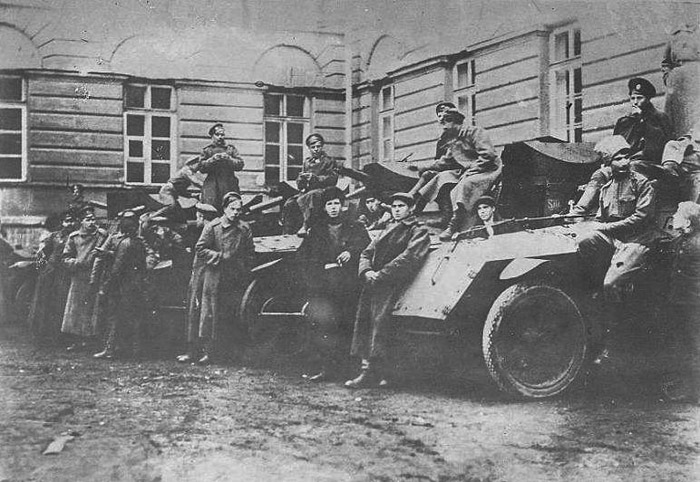
Crew of a newly delivered batch of Simplexes in Russia, 1916
The Sheffield-Simplex had first saw a large order (c50) by Belgium in 1915 but the first batch was refused as inadequate. One was however kept in Belgian service until 1925. All Sheffield-Simplex and Army-Motor-Lorries armoured cars seemed to have been of low quality assembly, with a second-rate steel for armour plating, brittle. Also the engine was fine for the lightweight original LA7b but not made for the heavy armoured body, with a weak engine and suffering chassis. The Russian Ministry ordered and received 25 vehicles that were tested. According to test, the armored cars were declared unsuitable for combat use and were not accepted into service with the Russian Imperial Army.
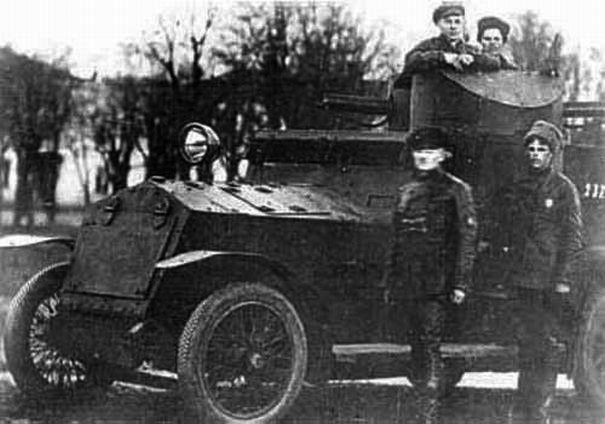
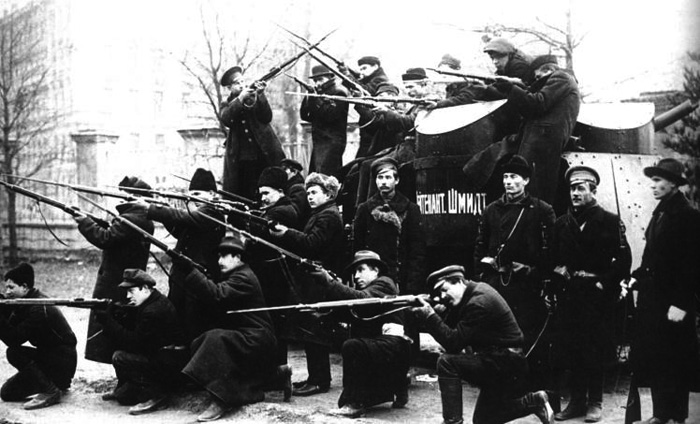
Vehicle of Lieutenant Schmidt, civil war
The ministry recognised them as not suitable for war. They were denied the frontline and instead were used for training at the Petrograd school. There were plans to reconstruct them for railway service as draisines. But the revolution came in before this was started. The revolution of 1917 saw them patrolling cities and they survived to the Civil war, taking part in engagements on both sides. But they were look upon as the most mediocre armoured-cars fighting in Russia at the time. There were only 15 left and just 10 extant by 15 June 1917. Ilsolated vehicles, due to shortages of armored vehicles, were still used by the Red Army during the Civil War.
In July 1919, well after the Armistice a local newspaper perhaps not well informed of the Russian vehicles made an article including a photograph of a Simplex "off to the front", boasting Sheffield as the ‘WORLD’S GREATEST ARSENAL." In 1920, Latvia obtained a single vehicle, named “Imanta” after a region close to Riga. It served in the interwar for about 1930, fate unknown. Today these vehicles are mostly forgotten.
Links
On landships.activeboard.comscribd.com
tanks-encyclopedia.com
prussia.online russian-armored-cars-1930-2000
warwheels.net/
chivalryandwar.co.uk
armoredcars-ww-one
armoredcars-ww-one
en.wikipedia.org
| Sheffield-Simplex 1916 specs | |
Dimensions | 16 ft x 6.8 ft x 9.4 ft (4.90 x 2.03 x 2.84 m) |
| Weight, battle ready | 4.037 t |
| Crew | 3-4 (commander, driver, 1-2 machine-gunners) |
| Propulsion | In-line 6-cyl. liquid-cooled |
| Speed | c28 mph (40 kph) |
| Suspensions | 4x2 leaf springs |
| Range | c200 km (125 mi) |
| Armament | 2 x Maxim Water cooled cal.303 (7.69 mm) MG turrets |
| Armor | Steel plating, bolted, maximum 6 mm (0.25 in) |
| Total production | 25 |
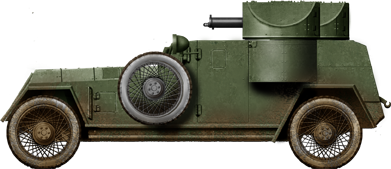
Sheffield-Simplex Armoured car, serie II (1916) in Russian service.
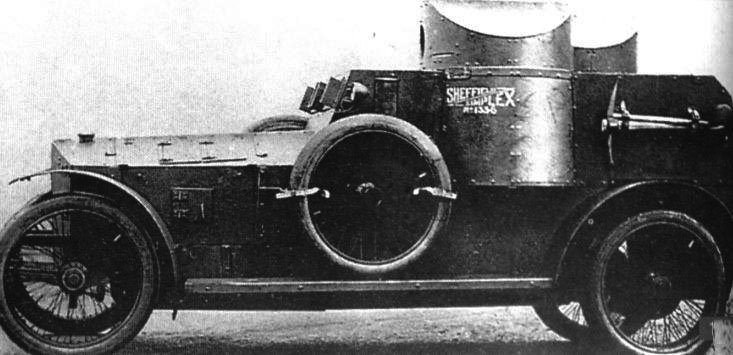
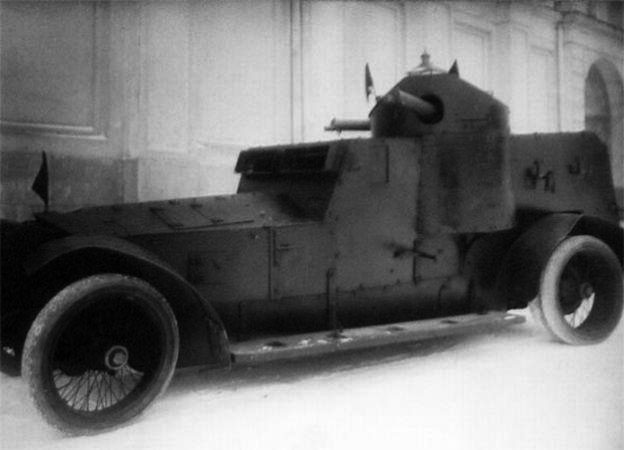
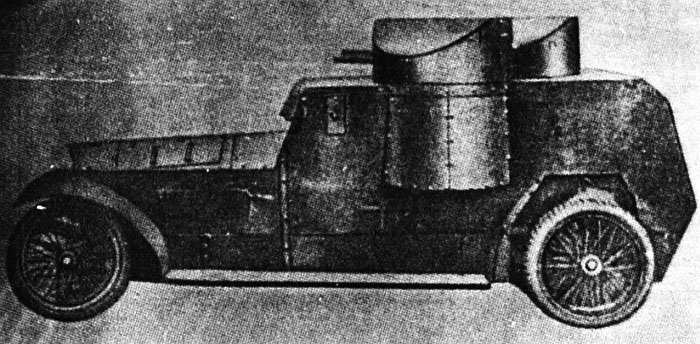
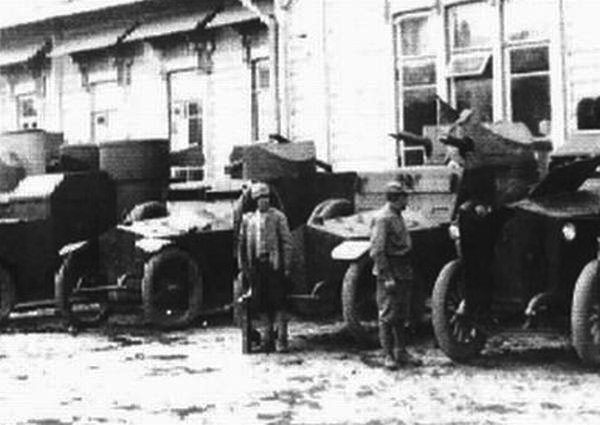
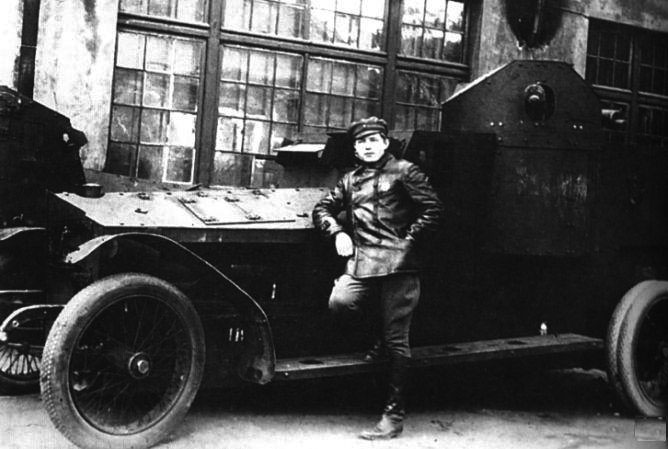
Various Russian vehicles
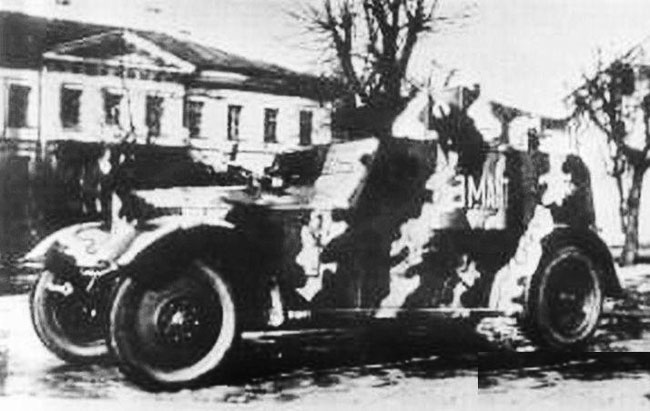
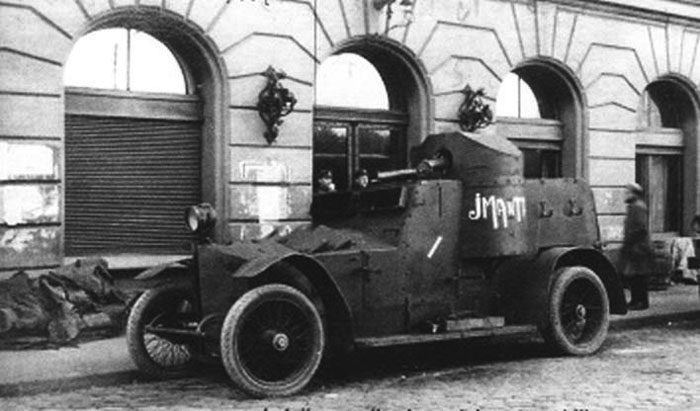
Lettonian Imanta armoured car, plain and later camouflaged.
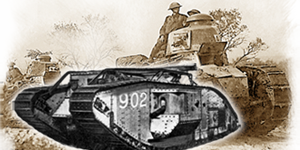
The Great War
 Austria-Hungary
Austria-Hungary Belgium
Belgium British Empire
British Empire France
France German Empire
German Empire Italy
Italy Russia
Russia USA
USAWW1 tanks posters


